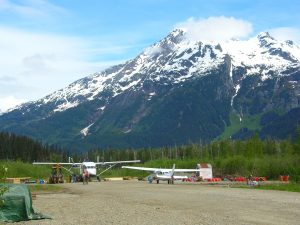
The steady increase in the price of gold since mid-2018 has been a boon to many precious metals investors; those who own physical gold, gold ETFs and senior gold producers being the most obvious.
But the implications for the precious metals industry as a whole are more wide-spread. The big question miners and investors alike are asking is – where will the next generation for profitable gold mines come from? The short answer is exploration companies.
One key determining factor for undeveloped gold deposits to become commercially feasible is payable grades, which really puts emphasis on grades and recoveries:
• A prospective ore deposit can have higher than average concentrations of gold
• Or the processing of an ore deposit results in higher than average recovery of gold
As this gold bull market picks up speed, well-known, high grade, previously discovered gold deposits become more and more attractive, driving their value significantly higher. When gold was below $1350 for much of the period between 2013 and 2018 – a period of falling gold prices but rising operating costs – many good quality, pre-development companies and deposits went on hold because the numbers just didn’t work.
Enter Canarc (TSX: CCM). Their New Polaris Gold Mine Project in British Columbia is one such example. New Polaris was discovered in the early 1990’s and became known as Western Canada’s highest-grade undeveloped gold resource to an entire generation of miners and investors.

In early 2019, Canarc updated its Preliminary Economic Assessment (PEA) of the New Polaris project using bear market numbers and a “game changing”, commercially available process to boost recoveries and reduce costs. Notably, the same process used to recover gold at Kirkland Lake’s Fosterville Gold Mine.
The new numbers were robust. Using an economic model at $1300 per/oz gold and a $0.77 Cdn/US exchange rate, the after-tax internal rate of return (IRR) and net present value (NPV) were 38% and USD$216 million respectively. Good, but not enough to set the market on fire at the time.
Fast forward a year, Canarc recently updated it’s still-compliant PEA, this time using $1500 gold, a $0.71 exchange rate, and lower cash operating costs for the economic model. New Polaris now runs an IRR of 56% and an NPV of USD$333 million. Perhaps no surprise that the stock has traded up on volume in recent weeks!
“It’s imperative to recognize that our business in cyclical,” said Canarc Chairman Bradford Cooke. “And more importantly, to know where we are in the cycle and when it is running in our favour. Now is the time to convert our long-term investment in discovering and evaluating New Polaris into Western Canada’s next great gold mine.”

Other Canadian pre-development projects that have returned to the front burner in recent months with updated PEA’s include Seabridge Gold’s (TSX:SEA) flagship KSM project – also in British Columbia, and ATAC’s (TSX-V:ATC) attractive Tiger deposit on their Rau project in the Yukon.
“It may take some time for these robust new economics to sink in for some analysts and investors,” said Canarc CEO Scott Eldridge. “There is always a bias towards new discoveries. Exciting new finds like Great Bear Resources rightly dominate the headlines. But at the end of the day, grade is king, and Canarc owns one of the best. We can create real value for our shareholders by advancing this high-grade gold deposit to feasibility.”
Ultimately, the new bull market for gold, coupled with fewer quality gold mine projects available to develop, suggests that keen investors may find more profitable opportunities beyond physical gold, ETFs and senior producers. Especially as those options become priced past reasonable valuations. Re-visiting some of the highest grade, well-known, undeveloped projects held by exploration companies may be a great place to start.












